The entire process
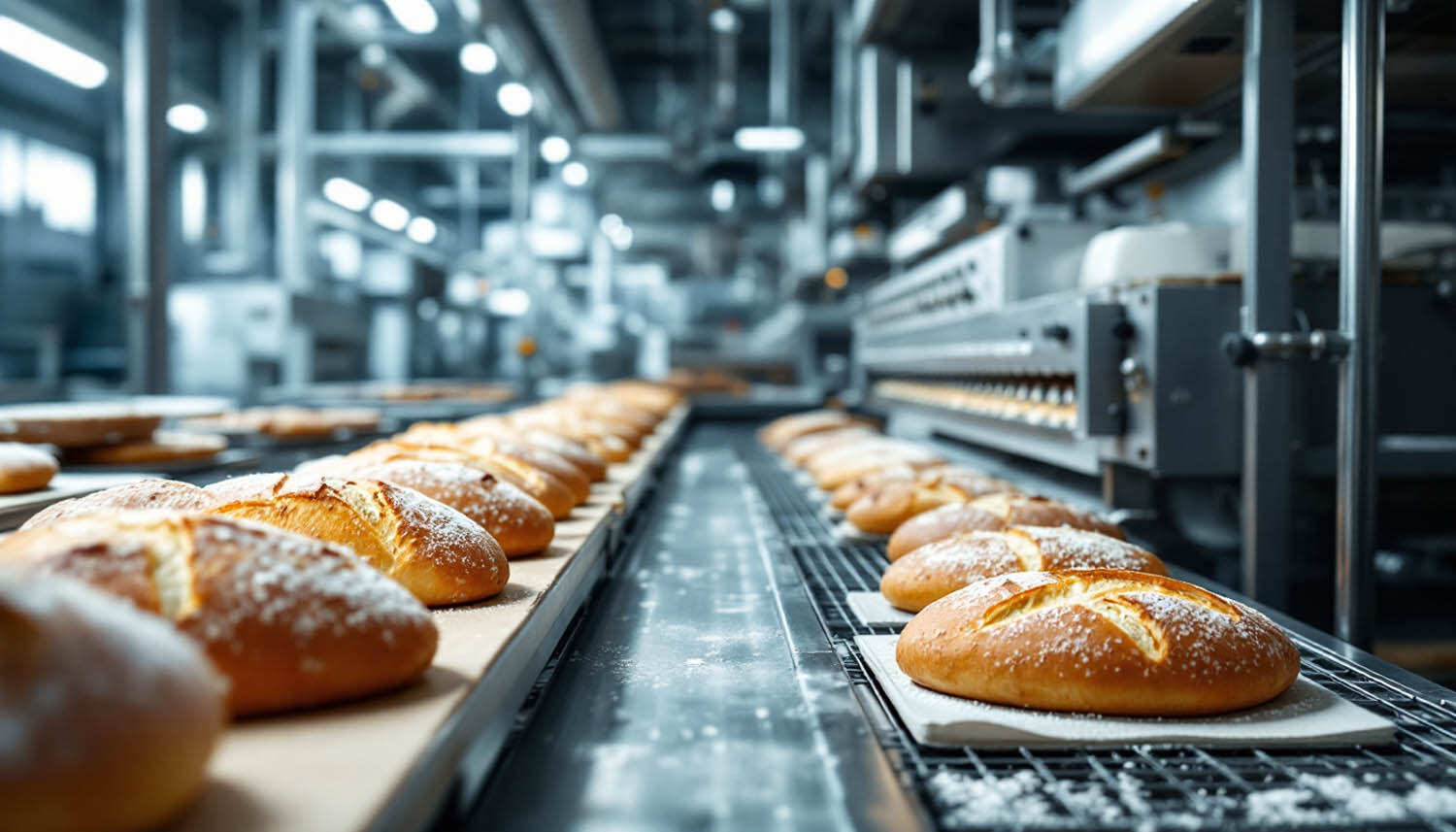
Phase 1:
The production of bread begins with the arrival of the flour, which is unloaded and transferred to the storage silos. Here the flour is stored in optimal conditions, ready to be used in the kneading phase.
Phase 2:
During kneading, the flour is mixed with the yeast and water at the desired temperature, precisely regulated thanks to the use of water coolers. This guarantees a uniform and well-hydrated dough. After kneading, the mixture is divided and shaped in the shaping phase, obtaining the desired shapes of bread.
At this point the pieces of raw bread
can take 2 paths
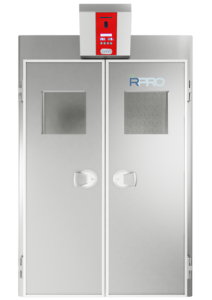
Phase 3:
They are transferred to the proving room, where controlled temperature and humidity favor the development of the volume and the formation of the internal structure.
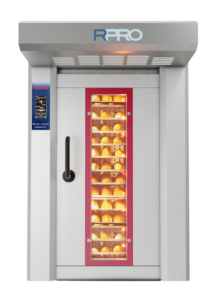
Phase 4:
Once leavening is complete, the bread is subjected to partial cooking lasting 12-15 minutes, a process which stabilizes its shape without completing cooking.
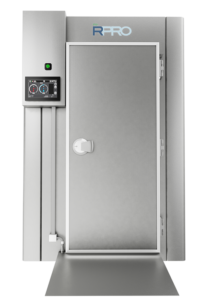
Phase 5:
After a short cooling moment, the bread is quickly introduced into the blast chiller & shock freezer, where rapid freezing takes place. This step is essential to maintain the organoleptic characteristics of the product unaltered.

Phase 5:
The raw bread is transferred directly to blast chiller & shock freezer, where rapid freezing takes place.
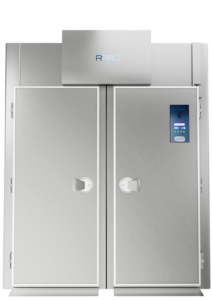
Phase 6:
At the end of both routes, the frozen bread is packaged and transferred to the negative temperature storage room, awaiting distribution.
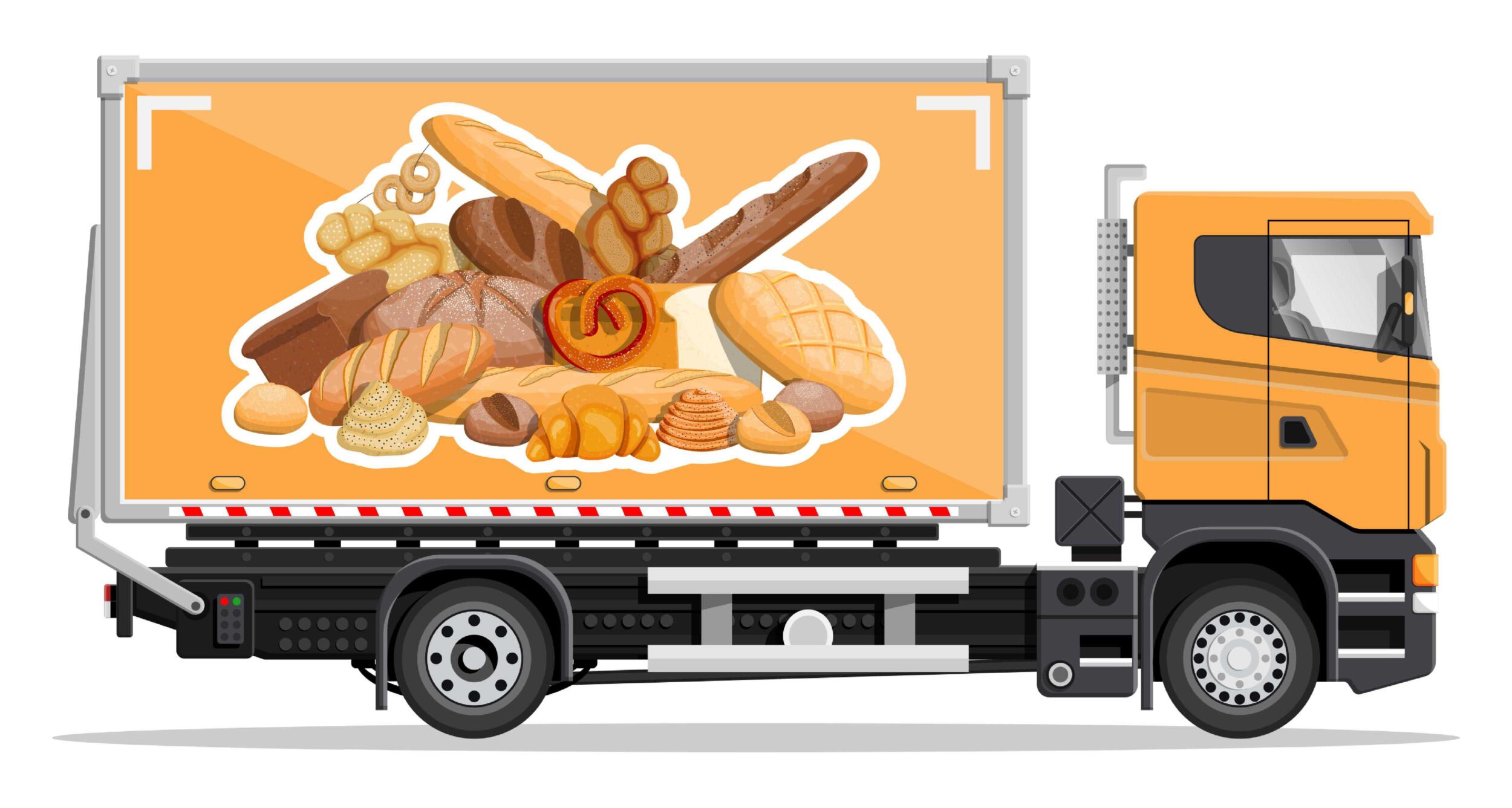
Phase 7:
The transport of raw or pre-cooked frozen bread takes place via refrigerated trucks, guaranteeing the continuity of the cold chain, so that the product reaches the different types of customers in perfect conditions.
Insight
Blast chillers and shock freezers are essential in the production of leavened products because they allow the quality, freshness and food safety of the product to be preserved.
After partial baking or shaping, bread and other leavened products must be quickly cooled or frozen to block microbial growth, preserve structure and ensure long shelf life.
Traditional freezing can create ice macro-crystals that damage the structure of the dough, while rapid shock freezing allows uniform and controlled cooling.
Main Advantages:
✅ Maintaining quality – Rapid freezing prevents the formation of large ice crystals, preserving the honeycomb and softness of the product.
✅ Prolonged preservation – It allows products to be preserved for long periods without altering their taste, consistency and nutritional properties.
✅ Production optimization – Allows you to produce in large quantities and keep in stock without waste.
✅ Food safety – Reduces the risk of bacterial proliferation, guaranteeing a safe product that complies with sanitary standards.
✅ Greater flexibility – Bakers can better manage demand by diversifying production and optimizing work shifts.
✅ Less moisture loss – Avoids dehydration of the raw product, keeping it soft and fragrant after final cooking.
Thanks to these advantages, blast chillers & shock freezers are essential to guarantee efficiency, quality and safety in the industrial and artisanal production of bakery products.
